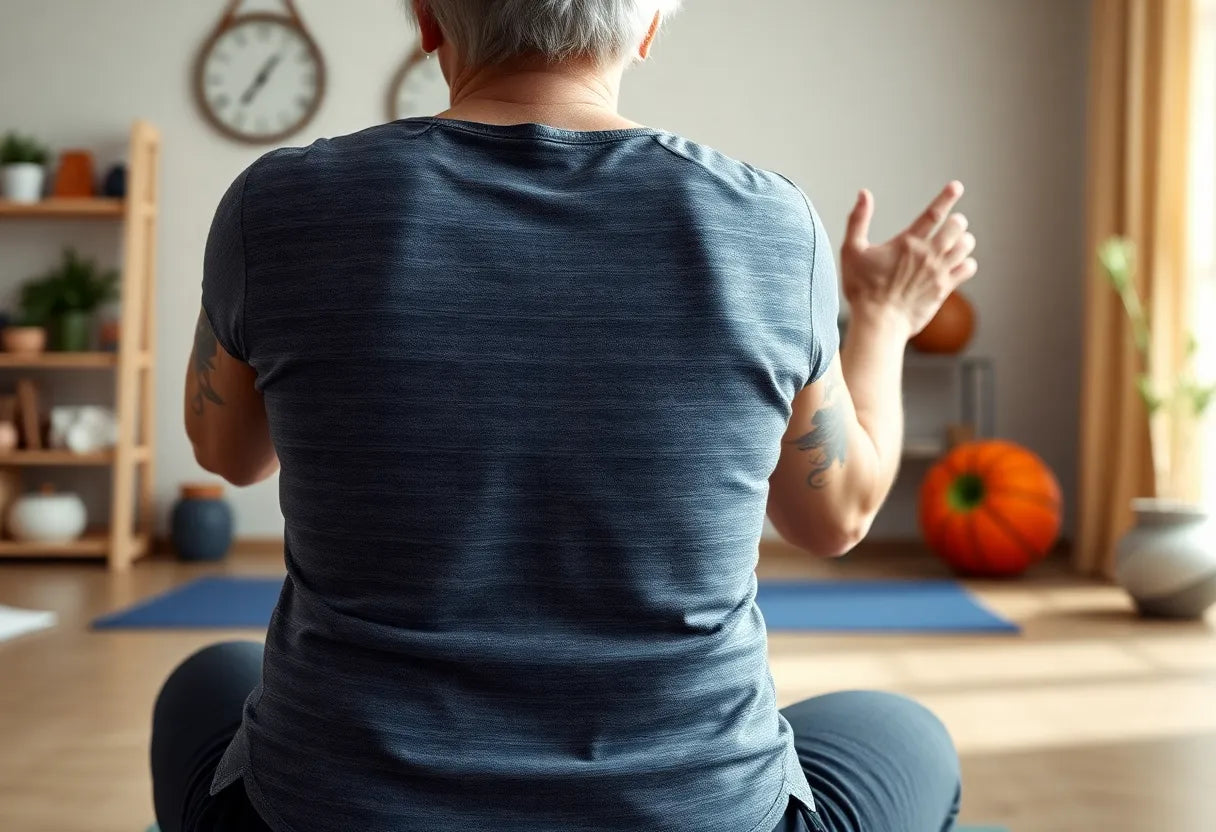Neck strain is a common issue that many individuals face, often arising from factors such as poor posture, prolonged periods of sitting, or elevated stress levels. This discomfort can manifest as a persistent ache or stiffness, significantly impacting daily activities and overall well-being. Whether you're working at a desk, using a mobile device, or simply going about your day, neck strain can be an unwelcome companion that disrupts your routine.
Understanding the root causes of neck strain is essential in addressing it effectively. Poor posture, particularly when sitting for long hours without adequate support, can lead to muscle tension and strain. Similarly, stress can cause muscles to tighten, exacerbating discomfort in the neck area. These factors, combined with the natural wear and tear of daily life, make neck strain a prevalent concern that requires proactive management.
Why exercise is crucial for neck relief
Incorporating targeted exercises into your daily routine is a powerful strategy for alleviating neck strain. Regular practice of specific exercises can enhance neck mobility, reduce muscle tension, and prevent future discomfort. These exercises are designed to stretch and strengthen the muscles around the neck, promoting better posture and reducing the likelihood of strain.
Exercise therapy is widely recognized as an effective approach for managing chronic neck pain. By focusing on endurance and neuromuscular control, these exercises help in building resilience against strain. The beauty of these exercises is their simplicity and accessibility, making them easy to integrate into your daily schedule without requiring special equipment or extensive time commitments.
Simple exercises for lasting neck relief
If you're seeking relief from neck strain, incorporating a few simple exercises into your daily routine can make a significant difference. These exercises are not only effective but also easy to perform, ensuring that you can maintain consistent practice without inconvenience. By dedicating just a few minutes each day, you can experience improved neck flexibility and reduced discomfort.
Imagine being able to move through your day with ease, free from the nagging pain of neck strain. With the right exercises, this can become your reality. These exercises are designed to be gentle yet effective, ensuring that you gain maximum benefit without the risk of further injury. By committing to regular practice, you can unlock lasting relief and enhance your overall quality of life.
Stay tuned as we delve deeper into specific exercises that target neck strain, providing you with detailed instructions and tips for optimal results. Embrace the opportunity to take control of your neck health and enjoy the freedom of movement that comes with it.
types of exercises for neck strain
Addressing neck strain effectively involves incorporating specific exercises that target the muscles responsible for neck mobility and tension. Here, we delve into a series of exercises that can be seamlessly integrated into your daily routine, offering relief and enhancing neck health over time. These exercises are designed to be gentle yet effective, ensuring that you can perform them without the risk of further injury.
neck flexion and extension
The neck flexion and extension exercise is a fundamental movement that helps in stretching and strengthening the front and back of the neck. By gently bending the head forward and backward, this exercise promotes flexibility and reduces stiffness.
Instructions: Sit or stand up straight. Slowly tilt your head forward, bringing your chin toward your chest. Hold this position for a few seconds before returning to the starting position. Next, tilt your head backward, looking up at the ceiling. Hold and then return to the initial position. Repeat this sequence 5-10 times to enhance neck mobility.
neck rotation
Neck rotation is vital for improving the range of motion and reducing tension in the neck area. This exercise involves turning the head to the right and left, which can significantly enhance overall mobility.
Instructions: Sit or stand with your back straight. Slowly turn your head to the right, aligning your chin with your shoulder. Hold this position momentarily before returning to the center. Repeat the movement on the left side. Perform 5-10 repetitions on each side to maintain flexibility.
lateral neck flexion
Lateral neck flexion focuses on stretching the sides of the neck, which can often become tense due to poor posture or prolonged sitting.
Instructions: While seated or standing, keep your shoulders relaxed. Gently tilt your head toward your right shoulder, attempting to touch it with your ear. Hold briefly, then return to the center. Repeat on the left side. Aim for 5-10 repetitions per side to alleviate tension.
chin tucks (neck retraction)
Chin tucks are an excellent exercise for realigning the neck and improving posture. This movement helps in reducing forward head posture, a common issue caused by prolonged computer or phone use.
Instructions: Sit or stand with a straight back. Pull your chin back, creating a "double chin" effect without tilting your head. Hold this position for a few seconds and then release. Repeat 10-15 times to enhance neck alignment and posture.
shoulder shrugs
Shoulder shrugs are effective in releasing tension not only in the neck but also in the shoulder area, providing comprehensive relief.
Instructions: Stand or sit with your arms at your sides. Lift your shoulders toward your ears in a shrugging motion. Hold for a moment and then lower them back down. Repeat this exercise 10-15 times to ease tension and promote relaxation.
best practices for performing neck exercises
To maximize the benefits of these exercises, it is crucial to adhere to specific practices. Performing movements gently and slowly is essential to avoid further injury. Each stretch should be held for a few seconds, and exercises should be repeated several times a day for optimal results. Consistency is key, and integrating these exercises into your daily routine can lead to significant improvements in neck health and comfort.
By committing to these exercises, you can look forward to enhanced neck strength, flexibility, and a reduction in chronic pain. Additionally, consider complementing these exercises with ergonomic aids, such as those offered by Anodyne, to create a comprehensive approach to managing neck strain. This combination can significantly enhance your overall well-being and quality of life.

Men's Posture Shirt™ - Black
Patented shirt activates muscles, relieves tension, and improves posture for work or leisure.

Women's Posture Shirt™ - Black
Stimulates muscles and relieves pain while supporting healthy posture throughout the day.
long-term benefits of neck exercises
Consistently practicing exercises for neck strain can yield significant long-term benefits, enhancing both strength and flexibility in the neck muscles. Over time, these exercises can lead to a notable reduction in chronic pain, allowing for greater freedom of movement and improved quality of life. By focusing on building resilience in the neck muscles, you can also prevent the recurrence of strain, ensuring that your neck remains healthy and comfortable.
Incorporating these exercises into your routine not only addresses immediate discomfort but also contributes to better posture and alignment. This holistic approach to neck health is crucial for maintaining overall well-being, particularly in our modern, tech-driven world where poor posture is prevalent. By committing to this practice, you can enjoy a life free from the constraints of neck pain.
integrating exercises with ergonomic solutions
To further enhance the effectiveness of these exercises, consider integrating them with ergonomic solutions, such as those offered by Anodyne. Ergonomic aids can provide additional support and comfort, helping to maintain proper posture and reduce the risk of strain. By combining exercises with ergonomic tools, you create a comprehensive strategy for managing neck strain, addressing both the symptoms and the underlying causes.
For example, ergonomic chairs and desks can promote better posture during work, while supportive pillows can ensure proper alignment during sleep. These tools work in tandem with exercises to create an environment that supports neck health, making it easier to maintain the benefits of your exercise routine.
frequently asked questions
how often should I perform these exercises?
Ideally, aim to do these exercises daily, or at least several times a week, to maintain neck health and prevent strain.
can these exercises be done at work?
Yes, these exercises are designed to be simple and can be performed at your desk or during breaks to alleviate tension.
what if I feel pain during the exercises?
If you experience pain, stop immediately and consult a healthcare professional to ensure you are performing the exercises correctly.
how long will it take to see results?
While some relief may be felt immediately, consistent practice over weeks will yield the best results in reducing neck strain and improving mobility.
can these exercises prevent neck strain?
Regular practice can strengthen neck muscles and improve posture, reducing the likelihood of future neck strain.
By integrating these exercises into your daily routine and complementing them with ergonomic solutions, you can effectively manage and prevent neck strain. Embrace the opportunity to take control of your neck health, and enjoy the comfort and freedom that come with it.
Källor
- Gross, A., et al. (2012). "A Cochrane Review of Manipulation and Mobilization for Mechanical Neck Disorders." Cochrane Database of Systematic Reviews.
- Vernon, H., & Humphreys, B. (2007). "Chronic Mechanical Neck Pain in Adults Treated by Manual Therapy: A Systematic Review." Journal of Manipulative and Physiological Therapeutics.
- Bridgewater Community Healthcare NHS Foundation Trust. (2020). "Neck Range of Motion Exercises: Patient Advice Sheet."
- Harvard Health Publishing. (n.d.). "Practical Tips and Simple Exercises to Prevent Neck Pain."
- Oxford Health NHS Foundation Trust. (2014). "Neck Exercises."
- Kaiser Permanente. (n.d.). "Neck Strain or Sprain: Rehab Exercises."
- Mayo Clinic Staff. (n.d.). "Neck Stretches."


















